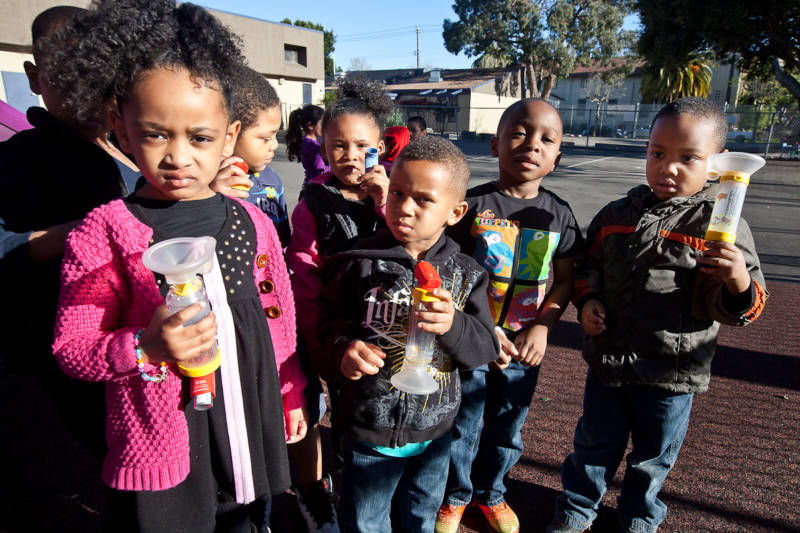Few would argue that California’s child care system is in need of major reform. Today, a whopping 77% of children statewide lack access to a licensed child care program, and many of those who teach and care for the state’s youngest are making marginally above minimum wage.
A Bold New Early Childhood Plan for California Aims for 'Equity'

The system is currently “at a crisis level,” according to Michael Olenick, head of the Los Angeles-based Child Care Resource Center. Yet he’s hopeful that things will improve. Olenick just finished participating in a state Assembly blue-ribbon commission, which released a report on Monday suggesting major improvements to the state’s early childhood education system.
The commission spent two years traversing the state, talking to everyone from parents and day care providers to activists and lawmakers in an effort to compile a detailed blueprint for what the system should look like.
The report brings a “holistic approach to all of the issues in the early childhood education space,” Olenick said. “Not only did we look at what needed to be addressed, we described how it should be addressed and put out a time frame.”
Initiated by Assembly Speaker Anthony Rendon, D-Paramount, who ran a large child care facility in Los Angeles prior to his election, the commission aimed to transcend the yearly budget debates on early childhood education and map out a long-term plan.
The 108-page report paints an early care landscape that looks dramatically different from what currently exists. The report calls for paid family leave, more home-visiting nurses, better training for the early care workforce and developmental screenings for every child. It also urges removing the “complicated barriers” that some immigrants face in having to prove their children's eligibility for subsidized care, and stresses the importance of parent input in the policymaking process.
Additionally, the report calls for pay parity between preschool teachers and elementary school teachers, noting that some preschool teachers now make as little as minimum wage.
“Kindergarten teachers get paid three times more than child care workers,” said Rendon. “We know that in California today, making $12.29 an hour is not going to allow someone to pay their rent and to raise a family.”
Child care providers can make even less, something that Tonia McMillian, who has run a day care program out of her Bellflower home for 25 years, knows all too well.
“I’m no longer accepting any new infants, toddlers and preschool-age children,” said McMillian, who participated in the commission. “It’s just too hard to make ends meet.”
McMillian, who is active in the local chapter of the Service Employees International Union, could afford to buy health insurance only recently, but she has no retirement plan, a situation faced by day care providers across the state.
Over the past five years, Los Angeles County has lost roughly 1,600 day care facilities, amounting to 15,000 fewer child care slots in a county where access is already limited, according to figures provided by the state Department of Social Services.
“We really need to make sure that providers and people like me are not just living right there at the edge of falling off the cliff,” McMillian said.
Christine Johnson-Staub, an early childhood expert at the Center for Law and Social Policy in Washington, D.C., said the report details how California could become a national model for early education programs.
“It is centered on the voices of families and what they need,” Johnson-Staub said. “It is centered on addressing racial inequities and other types of inequities to access, and that’s going to be a game changer for the whole national conversation,”
The commission report emphasizes that the crisis in the state’s early care system disproportionately affects children of color. It’s a question of equity, Rendon said, “where children on one side of town don’t get the same programs as children on another side of town.”
The report calls for streamlining the eligibility system so that low-income families can qualify for quality child care and keep it, even if they receive small pay bumps. It recommends that low-income families pay no more than 7% of their income for child care.
Rendon is aware that previous reports of this nature have collected dust, but he’s confident this one will be different. That’s in large part because of pledges by Gov. Gavin Newsom to prioritize early childhood education.
“I think we have a better chance of getting it done now than we’ve ever had in the history of our state,” Rendon said.
Deepa Fernandes is an Early Childhood reporting fellow at Pacific Oaks College. The fellowship is funded in part by First 5 LA.